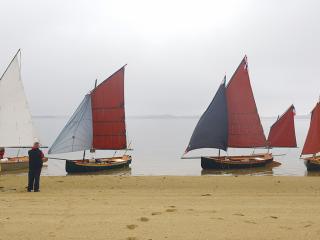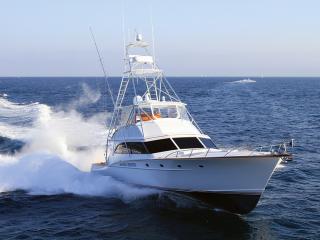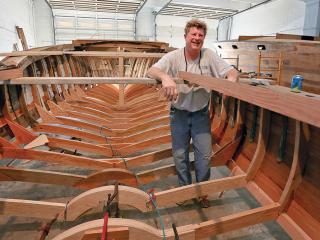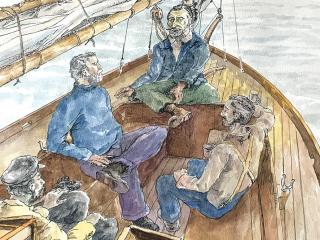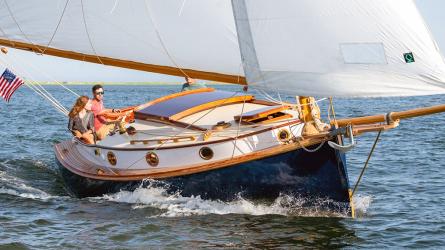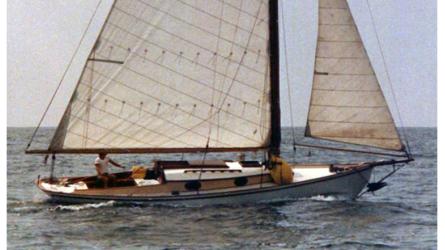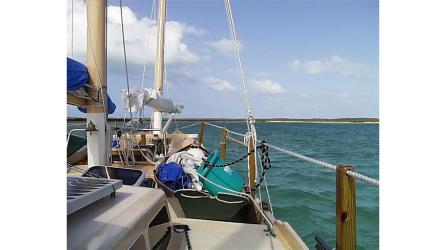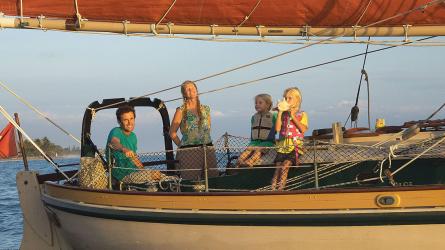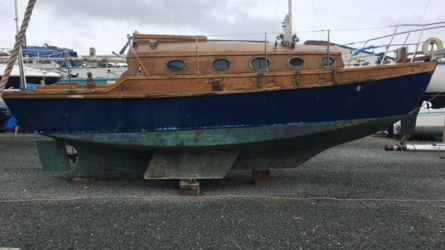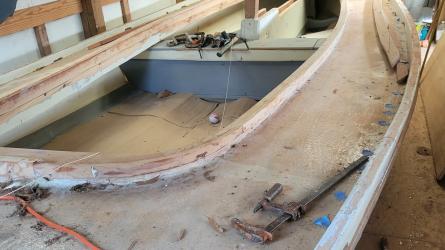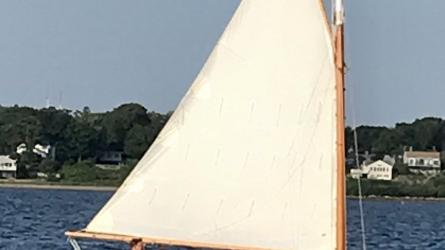May / June 2025
SWEET REMAINS
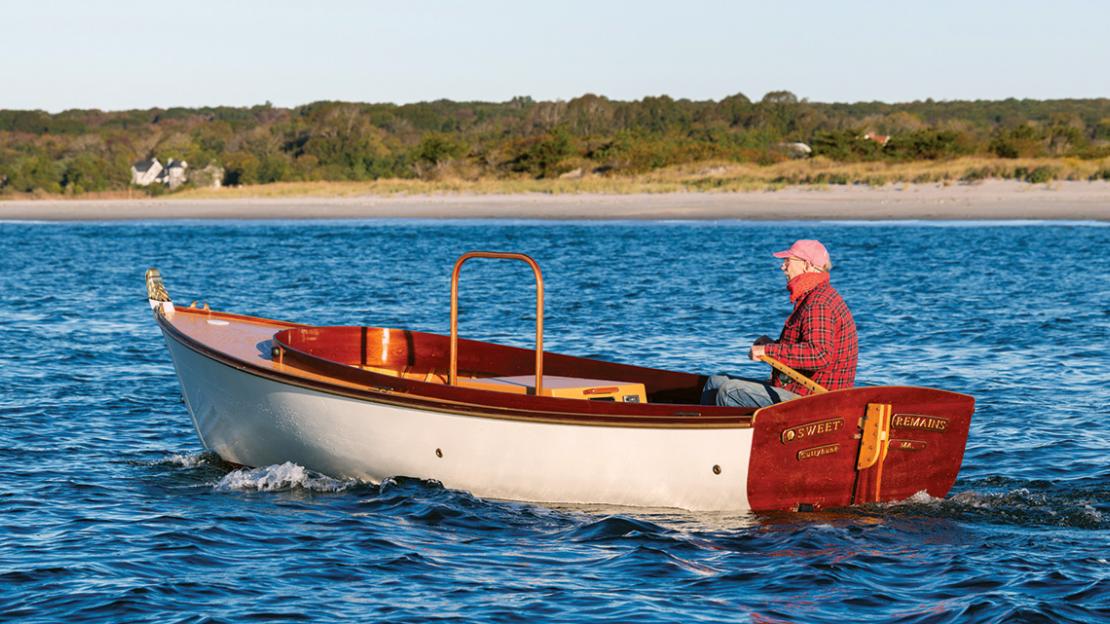
TYLER FIELDS
Alexander “Sandy” Brown had built biplanes before, but his 18' 7" open launch built to plans by Robert Steward was his first boat. He used traditional carvel plank-on-frame construction and chose a design that reminded him of his youth on Cuttyhunk Island, just across from his current home in Westport, Massachusetts.
In 2017, Alexander “Sandy” Brown was given a copy of Wooden Boats: In Pursuit of the Perfect Craft at an American Boatyard, Michael Ruhlman’s book about the construction of the schooner REBECCA at Gannon & Benjamin Marine Railway on Martha’s Vineyard, Massachusetts. In the book’s step-by-step descriptions and photographs, Sandy was inspired about boatbuilding, and his thoughts turned to the small craft he had known in the harbor at another Massachusetts island, Cuttyhunk, where he grew up in the 1940s and ’50s.
The boats that especially made an impression on him were used in the quest for striped bass; two world-record-setting fish have been caught off Cuttyhunk. A picture on the wall of his home, hiding in plain sight, brought it all back: the photo showed Capt. Louis Ramos, an islander who was awarded the Congressional Medal of Honor for his role in saving the crew of the whaleship WANDERER when it ran aground on Cuttyhunk in 1924. But now, what drew Sandy’s eye was the open launch in which Ramos was shown at the tiller. He was determined to build a boat of similar design.
The photograph is the only one known to exist of Ramos’s boat. No plans were available. For Sandy, it was the beginning of a seven-year journey to find a design for a similar open launch and build it himself for use in the waters around Cuttyhunk Island and the Westport River. He envisioned an inboard engine, a full keel, shallow draft, and an outboard rudder. After much searching, he was drawn to the elegant sheer of BARBARA ANNE, a design by Robert Steward published in his book Boatbuilding Manual (International Marine, fourth edition, 1994). She was an 18' 7" carvel-planked launch that was designed to be powered by a small inboard diesel, with full plans available from The WoodenBoat Store.
To read the rest of this article:
Click the button below to log into your Digital Issue Access account.
No digital access? Subscribe or upgrade to a WoodenBoat Digital Subscription and finish reading this article as well as every article we have published for the past 50-years.
ACCESS TO EXPERIENCE
2-for-1 Print & Digital Subscription Offer
For this holiday season, WoodenBoat is offering our best buy one, get one deal ever. Subscribe with a print & digital subscription for $42.95, and we’ll give you a FREE GIFT SUBSCRIPTION to share with someone special.
1 YEAR SUBSCRIPTION (6 ISSUES)
PLUS ACCESS TO MORE THAN 300 DIGITAL BACK ISSUES
PRINT+DIGITAL $42.95
Subscribe
To read articles from previous issues, you can purchase the issue at The WoodenBoat Store link below.
 Purchase this issue from
Purchase this issue from
